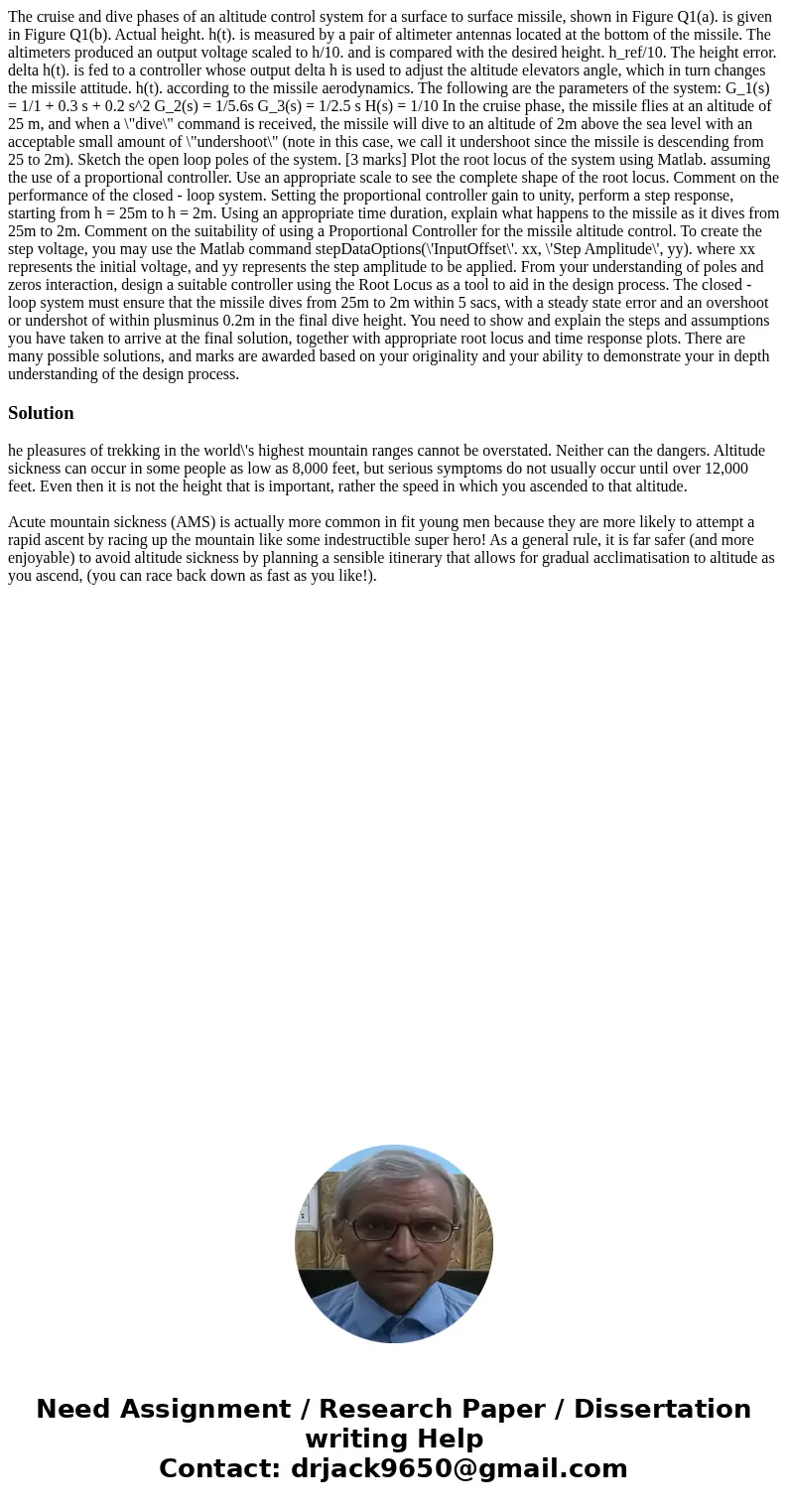The cruise and dive phases of an altitude control system for a surface to surface missile, shown in Figure Q1(a). is given in Figure Q1(b). Actual height. h(t). is measured by a pair of altimeter antennas located at the bottom of the missile. The altimeters produced an output voltage scaled to h/10. and is compared with the desired height. h_ref/10. The height error. delta h(t). is fed to a controller whose output delta h is used to adjust the altitude elevators angle, which in turn changes the missile attitude. h(t). according to the missile aerodynamics. The following are the parameters of the system: G_1(s) = 1/1 + 0.3 s + 0.2 s^2 G_2(s) = 1/5.6s G_3(s) = 1/2.5 s H(s) = 1/10 In the cruise phase, the missile flies at an altitude of 25 m, and when a \"dive\" command is received, the missile will dive to an altitude of 2m above the sea level with an acceptable small amount of \"undershoot\" (note in this case, we call it undershoot since the missile is descending from 25 to 2m). Sketch the open loop poles of the system. [3 marks] Plot the root locus of the system using Matlab. assuming the use of a proportional controller. Use an appropriate scale to see the complete shape of the root locus. Comment on the performance of the closed - loop system. Setting the proportional controller gain to unity, perform a step response, starting from h = 25m to h = 2m. Using an appropriate time duration, explain what happens to the missile as it dives from 25m to 2m. Comment on the suitability of using a Proportional Controller for the missile altitude control. To create the step voltage, you may use the Matlab command stepDataOptions(\'InputOffset\'. xx, \'Step Amplitude\', yy). where xx represents the initial voltage, and yy represents the step amplitude to be applied. From your understanding of poles and zeros interaction, design a suitable controller using the Root Locus as a tool to aid in the design process. The closed - loop system must ensure that the missile dives from 25m to 2m within 5 sacs, with a steady state error and an overshoot or undershot of within plusminus 0.2m in the final dive height. You need to show and explain the steps and assumptions you have taken to arrive at the final solution, together with appropriate root locus and time response plots. There are many possible solutions, and marks are awarded based on your originality and your ability to demonstrate your in depth understanding of the design process.
he pleasures of trekking in the world\'s highest mountain ranges cannot be overstated. Neither can the dangers. Altitude sickness can occur in some people as low as 8,000 feet, but serious symptoms do not usually occur until over 12,000 feet. Even then it is not the height that is important, rather the speed in which you ascended to that altitude.
Acute mountain sickness (AMS) is actually more common in fit young men because they are more likely to attempt a rapid ascent by racing up the mountain like some indestructible super hero! As a general rule, it is far safer (and more enjoyable) to avoid altitude sickness by planning a sensible itinerary that allows for gradual acclimatisation to altitude as you ascend, (you can race back down as fast as you like!).

 Homework Sourse
Homework Sourse